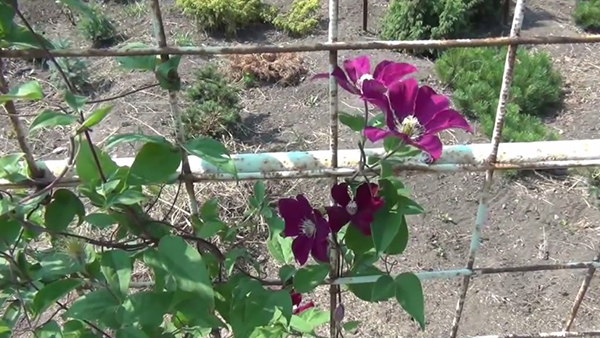When you know what to plant next to this or...
How to survive clematis wilt
One day your plant is thriving: it is growing vigorously and you feast your eyes on it. But overnight everything changes dramatically: the vine collapses, withering rapidly. First buds, flowers and foliage droop, then they turn black and gradually shrivel. This disease is called clematis wilt or sometimes in some American gardening books you can come across the name “leaf and stem spot”.
The disease is caused by the fungus Phoma clematidina. It usually doesn’t affect small flowered species (e.g. c. montana, c. orientalis, c. alpine, c. macropetala or c. viticella), whereas larger flowered ones do not seem to be so resistant.
The symptoms that indicate the cultivar is most likely to have a fungus infection are as follow:
• The leaves wilt and the leaf stalks start blackening. Stems also wilt soon after the leaf infection.
• If you split open the stems, it will show black discolouration of tissue, which is a distinctive mark of a fungus.
But bear in mind that these symptoms are quite similar to those of environmental stress. So make sure what the real problem is before starting the treatment.
Being sure that you are handling clematis wilt, the first step you need to take is pruning. Cut the stems that have been affected as close to the ground as possible. The healthy stems must be left untouched though. Fallen leaves must be removed afterwards. Then keep the roots watered and don’t forget about good sanitation procedures not only to cure the sick plant but also to prevent the spread of the disease to other species.











